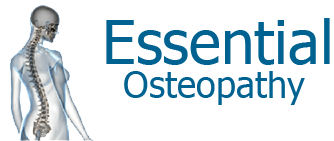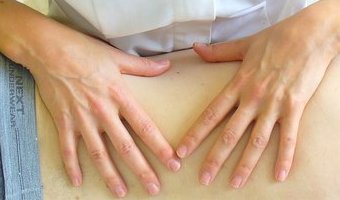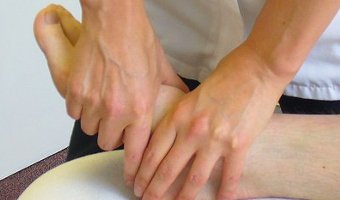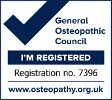Pelvic Girdle Pain and other pregnancy related problems
Pelvic Girdle Pain (also known as SPD or Symphysis Pubis Dysfunction) affects a number of people in pregnancy, with pain usually starting around 14 or 15 weeks. The pain is commonly distributed in a saddle-shape around the pelvis – inner thighs, pubic area, groin, sitting bones and hips – and is exacerbated by climbing stairs, turning over in bed, walking, getting in and out of the car and driving. There can also be a clicking or grinding feeling when the person moves.
Pelvic Girdle Pain occurs as the joints in the pelvis are moving out of their normal position due to the effects of the pregnancy hormone called relaxin. As the name suggests, relaxin softens the ligaments and fibrous connective tissue, particularly in the pelvis, so that the foetus can be accommodated as it grows and eventually as it is born. If these soft tissue structures loosen too much or too soon, the normally stable pelvis can become unstable by both the weight of the baby and the movements of walking, driving, etc.
The most common places in the pelvis which give pain during pregnancy are the Symphysis Pubis (at the front of the pelvis just above your pubis) and the the two sacroiliac joints (at the back of the pelvis joining the pelvic bones to the triangular shaped sacrum at the bottom of the spine – you can see them if you look at your back using a mirror, where the dimples appear about 3 inches from the midline at the base of your spine). Pain can be intense in the joints.
Osteopathic treatment for Pelvic Girdle Pain involves gentle soft tissue and articulation of of the pelvis and low back at intervals during the pregnancy and, in some cases, after the birth. Acupuncture can also be used to release the muscle tension and exercises prescribed to ease the symptoms as appropriate.
Otherwise you can do the following things to help yourself:
use a pregnancy support belt (which you can buy online and in the bigger pharmacies) to support the bump and the lower back
try sleeping with a pillow between your knees
take the weight off your back and legs by floating on your back in a warm swimming pool
antenatal yoga classes may help to stretch the lower back and hip muscles and take the strain off the symphysis pubic
Homeopathic medicines can be taken during pregnancy. Consult a reputable homeopath
keep generally active as immobility can worsen the symptoms. Have regular short breaks sitting on an upright chair on a cushion
…and what to avoid:
activities which aggravate your symptoms, usually twisting activities such as hoovering and ironing, carrying heavy weight or pushing supermarket trolleys
sitting in low chairs as getting out of them can strain the symphysis pubis
careful going round corners or sudden jolts when pushing a push-chair
don’t over-stride when walking and avoid long walks
try to keep active
In addition to Pelvic Girdle Pain, you may experience one of the following problems in pregnancy:
Sacroiliac Joint Dysfunction – tends to be a deep ache with a sharp grabbing sensation with movements such as standing up from a seated position. As with Pelvic Girdle Pain, it tends to be due to muscle imbalance within the pelvis which affects one of the 3 main pelvic joints to move freely and symmetrically. It is not specific to pregnancy.
Sciatica – as the alignment of the spine and pelvis changes and the baby grows heavier, soft tissue or joint pressure can cause compression of the sciatic nerve which can give you symptoms into one or both legs.
Thoracic pain – quite a number of patients seem to present with pain in the thoracic spine or around the ribs as the baby grows and pushes the rib cage upwards (depending on the positioning of the baby)







